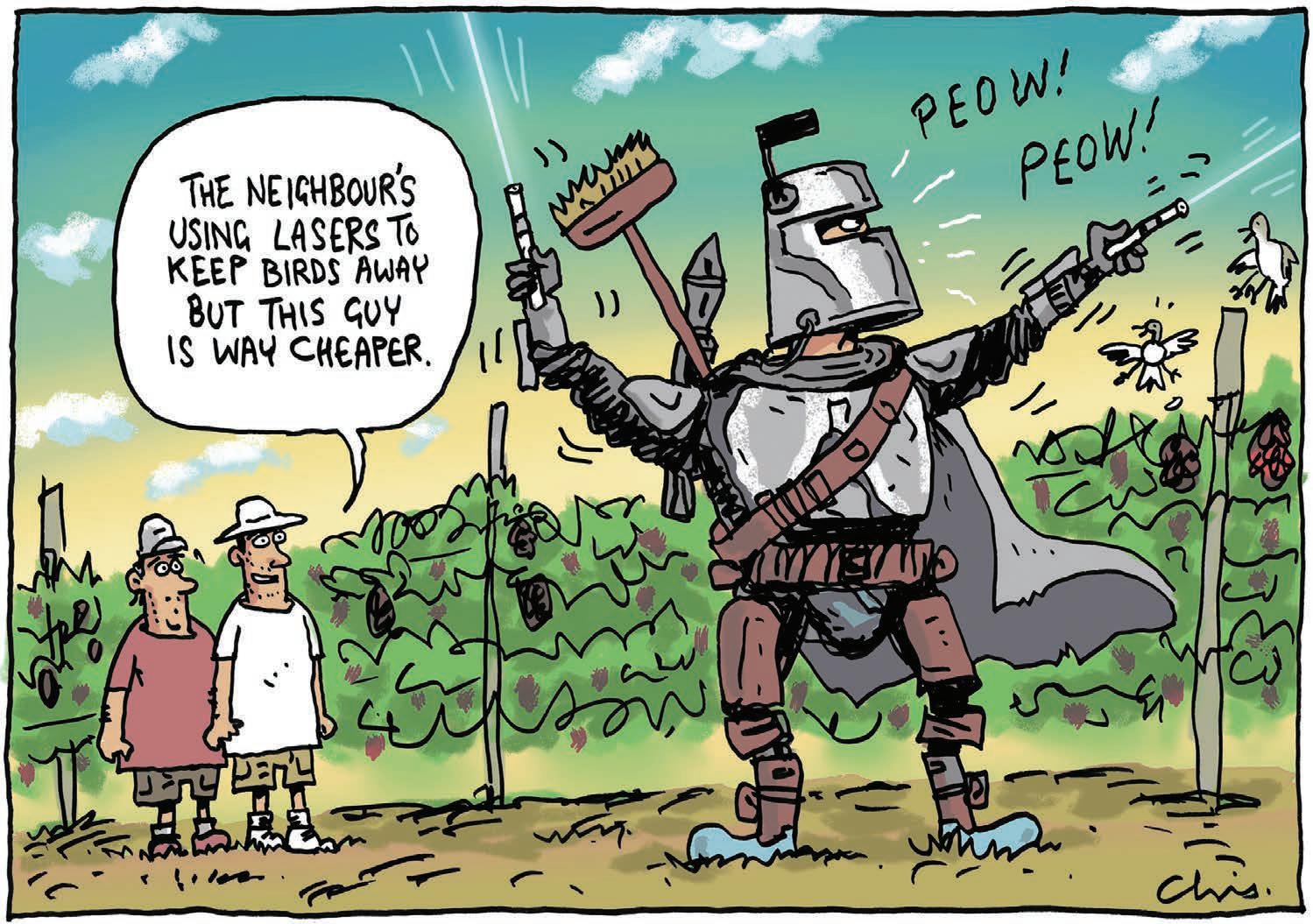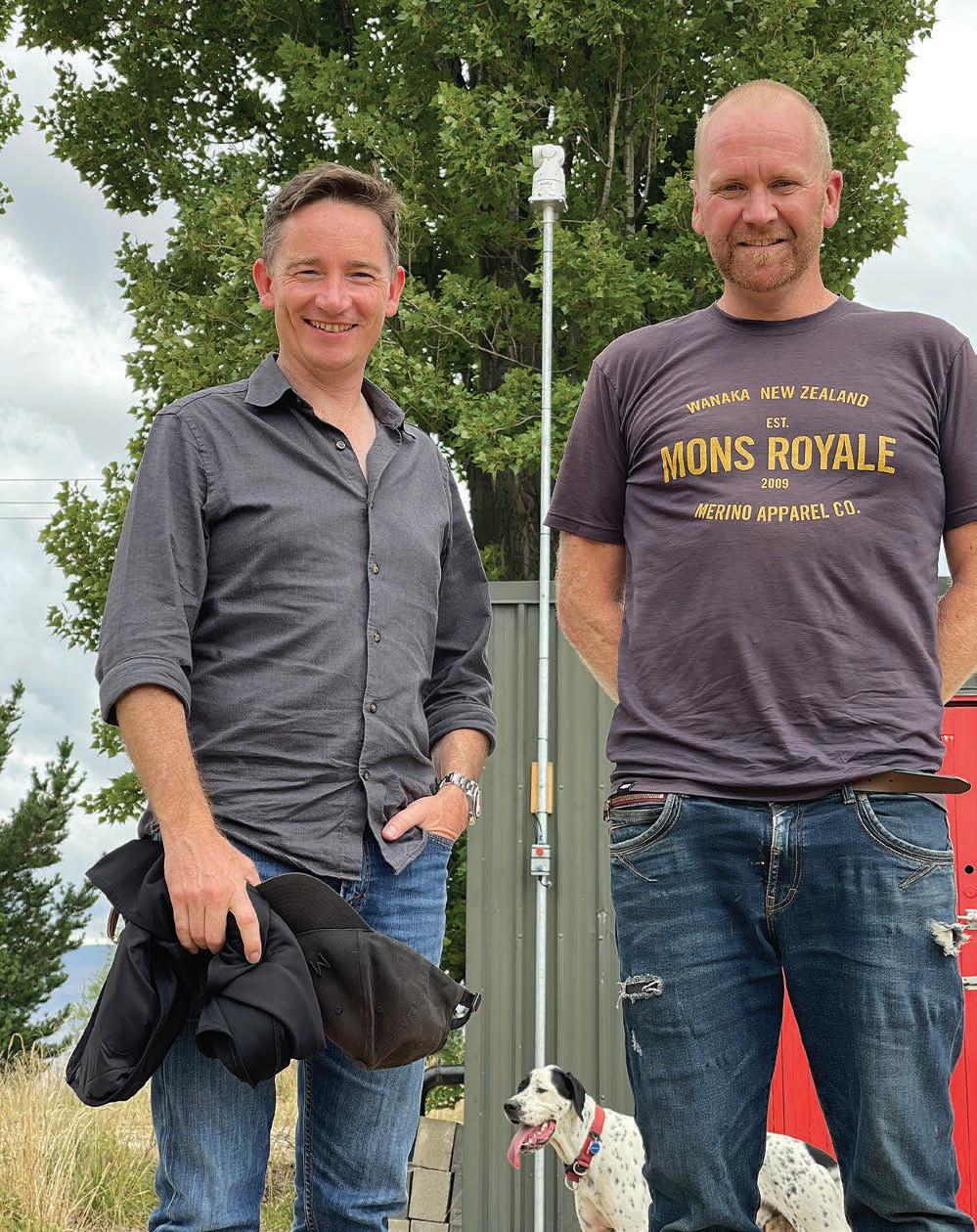Opinion
28 FARMERS WEEKLY – farmersweekly.co.nz – March 1, 2021
Perception of sector is changing Alternative View
Alan Emerson
IT WAS of little surprise that the recent Federated Farmers and Rabobank survey had 36% of farmers saying it was difficult to recruit skilled and motivated staff. That isn’t just an issue for the primary sector, it is an issue for the country as we need to farm ourselves out of the crisis that was covid. There have been several barriers to rural employment in the past, with the first being our image. I believe that is changing because of the Prime Minister’s statements that we’ll need to farm our way out of the current crisis. That has been well promoted by Feds, who I think have done an excellent job of positioning our sector as mainstream and politically independent. The levy organisations, Beef + Lamb NZ and DairyNZ have supported that. I also believe the organisations concerned have done a great job highlighting the conservation commitment of the sector and the results we’ve achieved. In addition with the lack of opportunity in the cities and the huge price of properties, a large number of people have moved to the provinces. This has been assisted by the fact that people can now work some, or all of the time, from
home. That shows there is more to life than a late lunch on Lambton Quay or a dismal desk job in a big city. What I hadn’t realised was the massive investment by the Government and the sector in highlighting both the opportunities and lifestyle of primary production and the jobs available, along with a comprehensive training package. Last year the Government allocated $19 million to try and get 10,000 people into the food and fibre sectors. As a result of that initiative, so far 1289 have found work, which is a promising start. The initiatives are many and varied. Locally, Taratahi has risen from the ashes and is offering free taster courses in agriculture. Two-thirds of the people on those courses have either entered employment or gone on to further study. Those attending have varied from city unemployed, contractors to airline pilots. The courses are described as practical aimed at getting people work-ready, and “aim to show people what farming is really like”. Taratahi is currently working with MPI to both broaden the appeal of working in primary industry and removing as many barriers as possible. I also spoke to the Primary Industry Training Organisation’s executive general manager – customer development Andrea Leslie. Coming from a rural background she is really bullish about our future, pointing out that enrolments have increased 200%. They’ve doubled since this
APPEAL: Government and primary sector agencies have noted an increase in people looking to study and work in the industry.
All the components for attracting young people to agriculture are in place and it’s up to everyone in the sector to maintain the momentum. Damien O’Connor Agriculture Minister time last year. She believes that the products the ITO is offering are meeting the industry’s needs and that there has been a marked improvement in both structures and programs at the organisation. Leslie also says ITO staff are authentically connected to agriculture at all levels.
I also hadn’t realised there was an organisation called PICA. It’s the Primary Industry Capability Alliance and is supported by the Government, industry good groups and the ITO. The chief executive Michelle Glogau describes some impressive initiatives to get young people into agriculture. These include having role models telling students what life is really like in farming. They’re also targeting teachers. She explains that on-farm you can work, earn and learn at the same time. She also believes that people were starting to move into agriculture pre-covid. Go onto the PICA website – it is impressive. In addition, Lincoln University postgraduate enrolments are up 342%, which is just as impressive. Undergraduate and diploma enrolments are up 28%. Massey
enrolments are up “between 2030%”. Agriculture Minister Damien O’Connor is pleased with progress. “We were the first sector to launch a skills strategy and the second to launch a sector of vocational excellence,” he told Farmers Weekly. “All the components for attracting young people to agriculture are in place and it’s up to everyone in the sector to maintain the momentum.” I started writing this article about the tragedy that 36% of farmers are struggling to find good, motivated staff. Having researched the issue, I’m convinced that is a temporary problem. The minister and the sector are to be congratulated for that. After all, why wouldn’t you move into agriculture? I regularly read about city folk who have two, three or, in one case I’m aware of, four jobs just to keep afloat. I’m obviously biased, but who would spend 60% of their income on rent, travel long distances to work and pay a fortune for meat and vegetables at the supermarket, when you can live on the job with minimal rent, grow your own vegetables and be part of a sector vital to NZ’s future? In addition, country schools offer a unique type of education and individuals and families are a lot safer in rural NZ I rest my case.
Your View Alan Emerson is a semi-retired Wairarapa farmer and businessman: dath.emerson@gmail.com
It’s dry but it’s not a drought just yet From the Ridge
Steve Wyn-Harris
I WAS rung a few days ago by Radio NZ asking me if I was in south-eastern Hawke’s Bay. I had to think for a bit as it’s not a term I’d thought of, heard or used. I said I suppose I was, but it was more Central Hawke’s Bay. Did they mean coastal Tararua? They thought that’s what they might be talking about. So, I suggested they were probably thinking a little further south and yes, east of me then. Then they asked how the drought was going. I queried if we were now in a drought and how did they know and they said that we were because NIWA’s latest update had indicated that. I told them that I would
consider that for my district, we were having a good old-fashioned hot and dry Hawke’s Bay summer and that they should ring me in a month because if it hadn’t rained by then, I would agree that we might be looking at a consecutive drought. I said I couldn’t chat any further as the drafter had just waded his way through a race of lambs and now it was my turn to draft those that were off to the works a little later in the day. Leaving those lucky fellows who got to hang around for another month or two picking away at what quality feed I could offer, sipping from nice cleaned out troughs and sitting in the shade of the trees I’ve planted for their comfort. But I suggested they talk to Max the drafter to see what he thought, and I overheard him telling them pretty much the same as I had. After he hung up, I suggested given what we had just learned, maybe we should go deeper into the lambs just in case. But I kept my nerve and said just keep taking out the tops. The February draft is never a big one as I’ve gone deep at weaning
to get over half away and then two months later, the January draft also gets a good number off as the clover levels are usually decent, they are no longer competing with their mothers for the quality and it hasn’t got too hot. So, we sent just 120 that day and later they killed out at a reasonable 19kg, which is fine for non-crop lambs at this time of the year. I’ve learned not to be greedy and just keep reducing the numbers. When my previous drafter Gordon was teaching me how to farm properly, he said that a lamb’s biggest rival was another lamb. Not just the competition against each other, but fewer lambs means a lower carry over worm burden for next year’s lambs to deal with. That evening, I totted up my rainfall figures. Just 20mm for this month, but areas further north of here got good rains in the same event two weeks ago. There was 77mm in January, courtesy of a thunderstorm in the first few days of the new year and a meagre 17mm for December. But we had a wet November, which grew a lot of feed at a time
WAITING GAME: Despite NIWA’s drought map, Steve Wyn-Harris believes that while temperatures have been up, it’s too early to be labelling the conditions yet.
I destock, and there is still a bit of that snap-dried feed around waiting to be cleaned up by older stock. It has been hot though, with temperatures around 30degC, but there has been little wind. I then went to the NIWA site and sure enough their drought index map had us looking good and dry. Folk will be twitchy after last years’ experience and for good reason. Prudent destocking remains a good option, just in case. Space at the meat plants for both sheep and cattle has remained tight. The covid-19 disruption with shipping and markets is one of the
reasons and staffing continues to be problematic. The students have returned to their studies and I hear the apple orchards and vineyards are competing on pay rates for a change, in their own desperation to get their harvest in. So, we hang in the balance. Good rains within the next few weeks will set us up for a good autumn and if the dry continues, then things will get tricky quite quickly. Time will tell.
Your View Steve Wyn-Harris is a Central Hawke’s Bay sheep and beef farmer. swyn@xtra.co.nz





